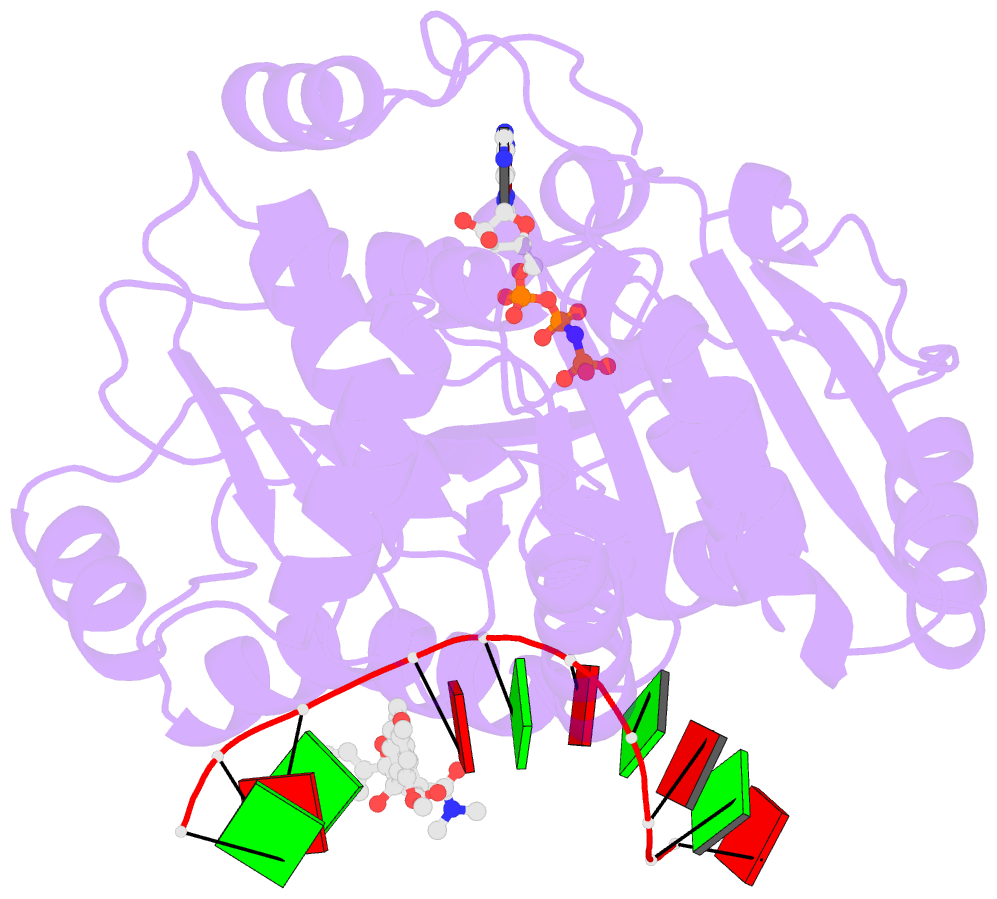Summary information and primary citation
- PDB-id
- 5zc9; SNAP-derived features in text and JSON formats;
DNAproDB
- Class
- translation-RNA
- Method
- X-ray (2.0 Å)
- Summary
- Crystal structure of the human eif4a1-atp analog-roca-polypurine RNA complex
- Reference
- Iwasaki S, Iwasaki W, Takahashi M, Sakamoto A, Watanabe C, Shichino Y, Floor SN, Fujiwara K, Mito M, Dodo K, Sodeoka M, Imataka H, Honma T, Fukuzawa K, Ito T, Ingolia NT (2019): "The Translation Inhibitor Rocaglamide Targets a Bimolecular Cavity between eIF4A and Polypurine RNA." Mol. Cell, 73, 738. doi: 10.1016/j.molcel.2018.11.026.
- Abstract
- A class of translation inhibitors, exemplified by the natural product rocaglamide A (RocA), isolated from Aglaia genus plants, exhibits antitumor activity by clamping eukaryotic translation initiation factor 4A (eIF4A) onto polypurine sequences in mRNAs. This unusual inhibitory mechanism raises the question of how the drug imposes sequence selectivity onto a general translation factor. Here, we determined the crystal structure of the human eIF4A1⋅ATP analog⋅RocA⋅polypurine RNA complex. RocA targets the "bi-molecular cavity" formed characteristically by eIF4A1 and a sharply bent pair of consecutive purines in the RNA. Natural amino acid substitutions found in Aglaia eIF4As changed the cavity shape, leading to RocA resistance. This study provides an example of an RNA-sequence-selective interfacial inhibitor fitting into the space shaped cooperatively by protein and RNA with specific sequences.





